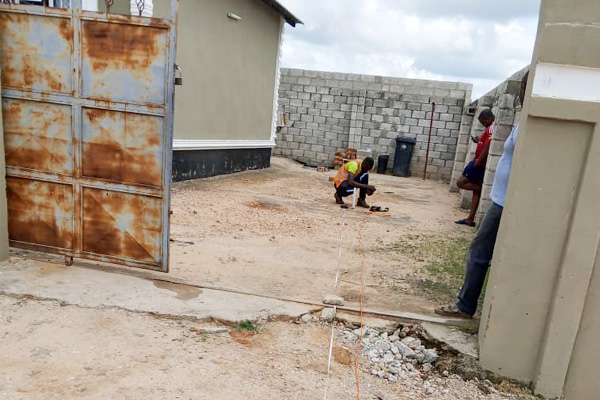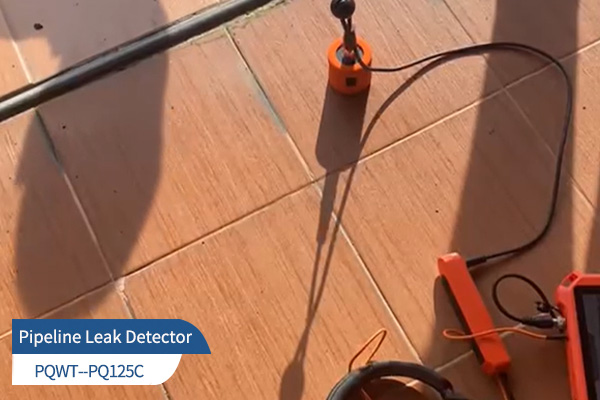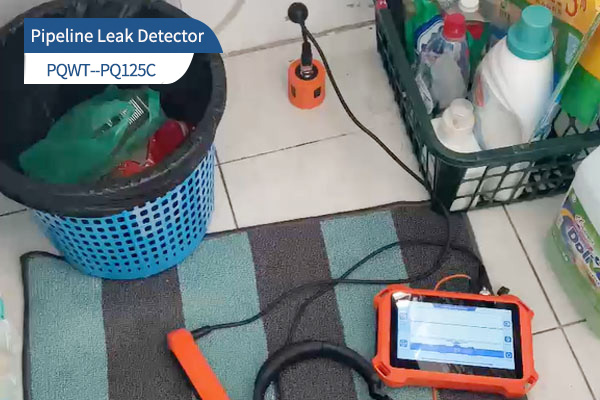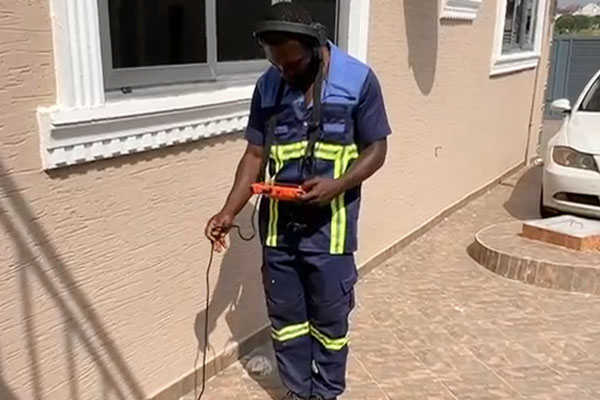In the water network maintenance industry, leak detection has long been a time-consuming and labor-intensive challenge. Noisy environments make things even worse, rendering traditional listening rods almost useless. On June 13, 2025, an on-site test at Longzhou County Jinlong Water Plant fully demonstrated the exceptional performance of the PQWT- L2000 Leak Detector under complex conditions.
The target was a DN50 PE water supply main located about 120 meters outside the east gate of Jinlong Middle School. The inspection coincided with the after-school rush—pedestrians and vehicles everywhere, plus construction noise from the playground. Background noise hit 72 dB. For ordinary equipment, any leak sound would have been completely drowned out. But the L2000 delivered a completely different result.
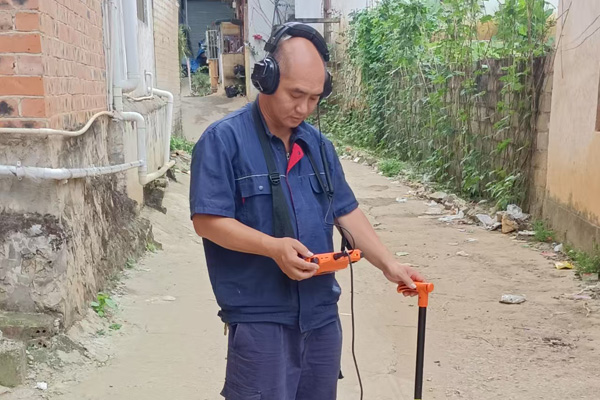
Engineer Huang first activated the device’s “environmental noise suppression” function, which automatically filtered out high-frequency interference so that leak signatures stood out clearly. Then, following the pipeline route, he collected acoustic data every 0.5 meters to ensure dense measurement points and reliable results.
When the probe reached a spot 4.3 meters from the school wall, a distinct 1.6 kHz hiss came through the headphones. The screen simultaneously showed a sharp 18-second spike in the spectrum. Huang switched to pinpointing mode, confirmed the signal’s stability, and marked the location with spray paint.
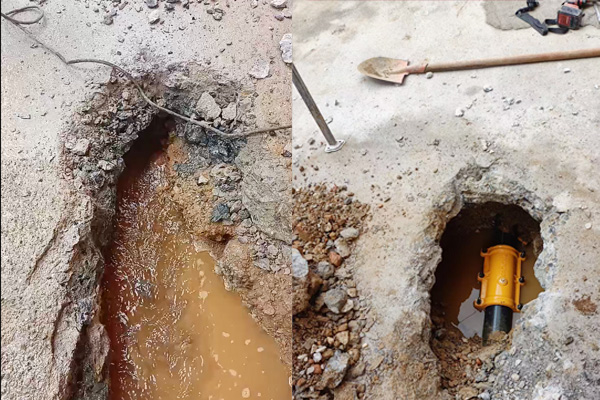
Excavation confirmed the device’s reading exactly: a 3 cm transverse crack in the pipe, with a leakage rate of 1.8 m³/h—almost identical to the device’s estimate of 1.9 m³/h. From arrival to precise leak location, the entire process took only 26 minutes.
Why is the L2000 so efficient?
1. Intelligent filtering: Automatically suppresses background noise for clearer detection.
2. Precise positioning: Dual verification using acoustic features and frequency spectra, with errors within 20 cm.
3. Data-driven workflow: Reduces reliance on subjective experience and lowers the skill barrier.
4. High-efficiency single-operator use: Detection speed several times faster than traditional listening rods.
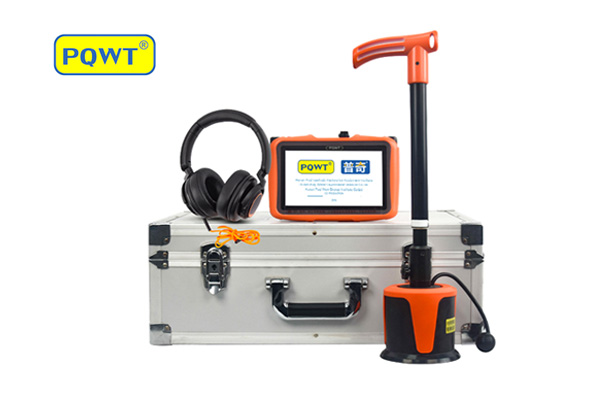
Huang commented in a WeChat group: “The L2000 can lock onto leaks even in a noisy campus—at least three hours faster than the old equipment.”
For water utilities, the time value of leak detection is critical. Traditional tools often require repeated, large-area probing—time-consuming and labor-intensive. The PQWT- L2000 raises operational efficiency to a whole new level, enabling inspectors to resolve issues quickly and scientifically, preventing water waste and eliminating potential hazards.





